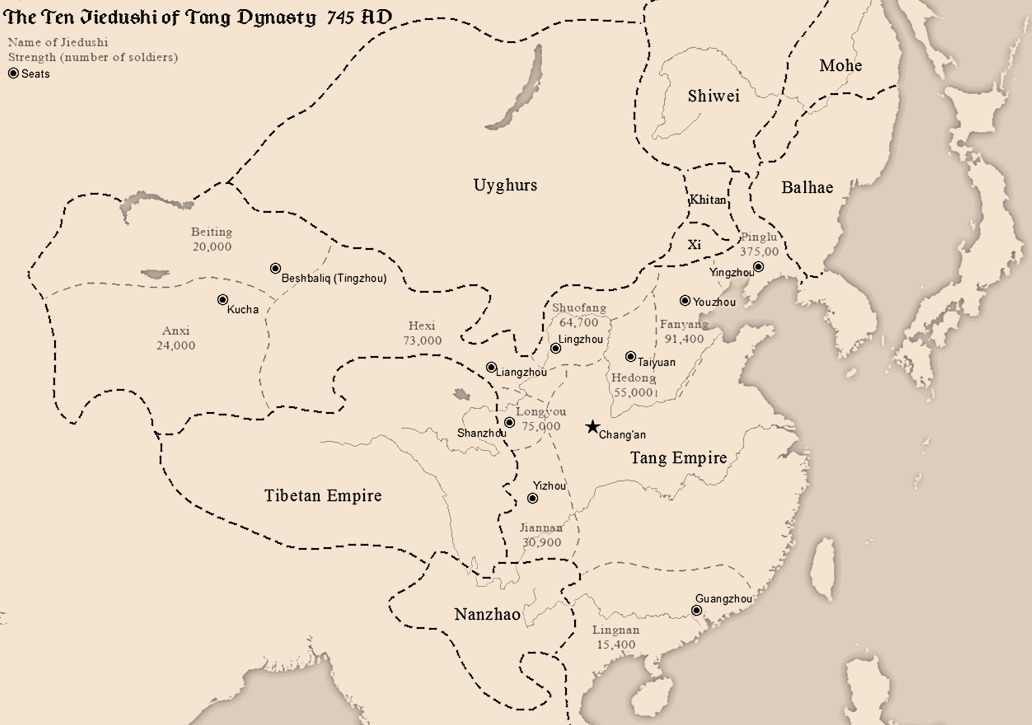Greetings!
Last week I talked about how we’re adding China to the world of Crusader Kings II without actually extending the map any farther. When you are playing in the Orient, you would be wise to remember the “Divine Land” to the east. Indeed, from time to time, you will be getting tidings about the situation in China so that you can plan accordingly. China has a Status and a Policy. The latter rarely changes except when a new emperor ascends to the Dragon Throne (or when the Western Governorate either wins or loses a major war.) By far the most common Policy is “Open”, which means it’s business as usual; China is open to trade and the Silk Road is active. Moreover, the emperor is interested in maintaining the tributary system and in conducting diplomacy with the barbarian periphery. However, some Chinese administrations favor a “Closed” Policy. At such times, the Silk Road will be shut down and the emperor will not deal with foreign rulers. Neither will China attempt any form of military adventures beyond its borders. Lastly, and most rarely, China may adopt an “Expansionist” Policy. This is a time of great peril for rulers near the Chinese border, who would be well advised to swallow their pride and kowtow to the emperor, accepting tributary status before the Western Governorate is expanded with extreme force...

Chinese Policy should be seen as a political stance, but China also has a “Status”, which is beyond the emperor’s control. For example, China can be struck by famine, plague, unrest, Civil Wars and invasions by Mongols and Jurchens, and it can also sometimes experience a “Golden Age”. All of these states have an impact on China’s behavior and on the Silk Road. For example, if China suffers from famine, income from the Silk Road is drastically lowered, and players should watch out for the conclusion to a Chinese Civil War or Altaic invasion; it is not unheard of for a displaced dynasty or losing faction to seek refuge in the West… More on that in a later dev diary. I believe that will do it for today. Next week we’ll go into details about how you interact with China and what’s in it for you!
Last week I talked about how we’re adding China to the world of Crusader Kings II without actually extending the map any farther. When you are playing in the Orient, you would be wise to remember the “Divine Land” to the east. Indeed, from time to time, you will be getting tidings about the situation in China so that you can plan accordingly. China has a Status and a Policy. The latter rarely changes except when a new emperor ascends to the Dragon Throne (or when the Western Governorate either wins or loses a major war.) By far the most common Policy is “Open”, which means it’s business as usual; China is open to trade and the Silk Road is active. Moreover, the emperor is interested in maintaining the tributary system and in conducting diplomacy with the barbarian periphery. However, some Chinese administrations favor a “Closed” Policy. At such times, the Silk Road will be shut down and the emperor will not deal with foreign rulers. Neither will China attempt any form of military adventures beyond its borders. Lastly, and most rarely, China may adopt an “Expansionist” Policy. This is a time of great peril for rulers near the Chinese border, who would be well advised to swallow their pride and kowtow to the emperor, accepting tributary status before the Western Governorate is expanded with extreme force...

Chinese Policy should be seen as a political stance, but China also has a “Status”, which is beyond the emperor’s control. For example, China can be struck by famine, plague, unrest, Civil Wars and invasions by Mongols and Jurchens, and it can also sometimes experience a “Golden Age”. All of these states have an impact on China’s behavior and on the Silk Road. For example, if China suffers from famine, income from the Silk Road is drastically lowered, and players should watch out for the conclusion to a Chinese Civil War or Altaic invasion; it is not unheard of for a displaced dynasty or losing faction to seek refuge in the West… More on that in a later dev diary. I believe that will do it for today. Next week we’ll go into details about how you interact with China and what’s in it for you!



